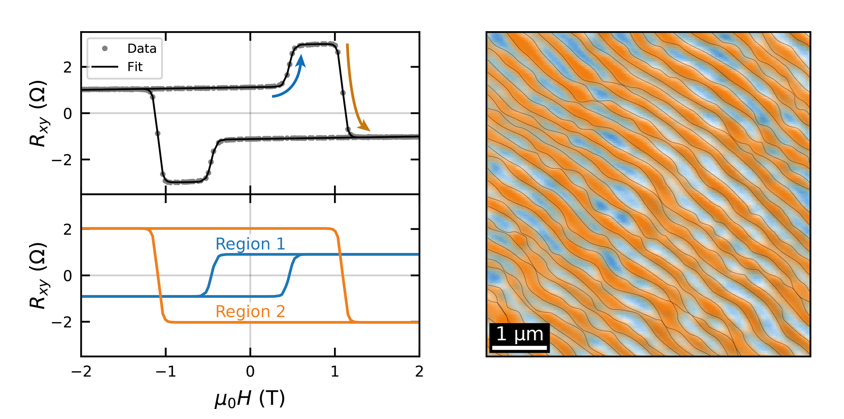Over the past few years there has been rapidly growing interest in ‘magnetic skyrmions’, which are topologically protected magnetic bubbles with promising applications in next-generation computing devices. Recently, there have been controversial reports of skyrmions existing in ultra-thin films of the oxide ferromagnet SrRuO3, as evidenced by an additional peak in the Hall effect – the so-called ‘topological Hall effect’.
We show that these additional peaks can instead arise from the superposition of two anomalous Hall effects from two separate magnetic regions. Single unit-cell thickness variations in the films can give two magnetic regions with two separate coercive fields and two separate anomalous Hall effects which add together. This two-channel anomalous Hall effect explains the results without the presence of skyrmions in the SrRuO3 films.
Figure caption: (Left) A peak in the Hall effect looks like a topological effect but can be explained by two anomalous Hall effects from two magnetic regions. (Right) A magnetic force microscopy image of the thin film showing the change in signal through the first switch in blue and the second switch in orange. These two separate magnetic regions have opposite sign anomalous Hall effects which add to make the peak shape.
Graham Kimbell, Paul M. Sass, Bart Woltjes, Eun Kyo Ko, Tae Won Noh, Weida Wu, and Jason W. A. Robinson, "Two-channel anomalous Hall effect in SrRuO3", Phys. Rev. Materials 4 (2020) 054414

